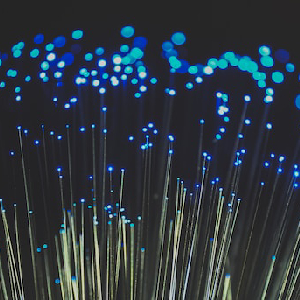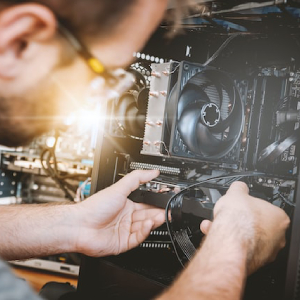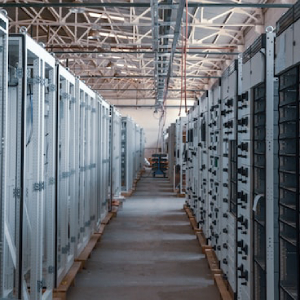Iyardsmunohistochemical study was did using indirect immunofluorescence microscopy once the explained previously (10)
During the short term, male ddY mice had been anesthetized having ether immediately after which perfused intracardially that have saline, accompanied by cuatro% paraformaldehyde inside 0.step 1 Yards phosphate buffer (pH eight.4). The latest organs was separated, and you will frozen areas was indeed prepared. In the example of cultured structure, cells for the poly- l -lysine-coated coverslips was indeed repaired which have 4% paraformaldehyde for the phosphate-buffered saline (PBS) having 29 minute. Shortly after being wash that have PBS, the fresh new specimens was in fact incubated for possibly 20 min (cells) or 31 min (organs) in identical shield with which has 0.1% Triton X-one hundred, followed closely by PBS which has 2% goat serum and you can 0.5% bovine serum albumin. The newest specimens have been incubated with antibodies diluted to at least one ?g/ml otherwise 1,000-flex (anti-mMATE1 or other antibody) with PBS that contains 0.5% bovine solution albumin for just one h at the room temperature. Samples was in fact sparkling 4 times which have PBS after which answered which have the new additional antibody or Alexa Fluor 568-labeled anti-mouse IgG (step 1 ?g/ml) otherwise Alexa Fluor 488-branded anti-bunny IgG (dos ?g/ml) for starters h at the room-temperature how to reset your tinder account. Fundamentally, the latest immunoreactivity is actually examined under both an Olympus BX60 microscope otherwise a keen Olympus FV300 confocal laser beam microscope.
mMATE1 while the good polyspecific OC transporter.
The latest cDNA to have mMATE1 encodes a healthy protein from 532 amino acids having 78.1 and you will 24.1% succession identity to that particular away from person MATE1 and Vibrio parahaemolyticus Norm Na + /multidrug antiporter, a model of your own Companion family (17), respectively (Fig. 1A). A great hydropathy spot of mMATE1 forecasts 12 transmembrane domains (Fig. 1B).
Fig. 1.Amino acid sequence of mouse multidrug and toxin extrusion 1 (mMATE1). A: amino acid sequences of the proteins are aligned with that of NorM (17). Identical amino acid residues are indicated by asterisks. Predicted transmembrane regions are boxed. hMATE1, human MATE1. B: putative secondary structure of mMATE1. The membrane topology of mMATE1 was predicted by the combined procedure of Kyte and Doolittle and TMPred. A glutamate residue (E273) that is conserved in the MATE transporter family and that is essential for activity is circled (19). N, NH2 terminus; C, COOH terminus.
To characterize the transport properties of mMATE1, we measured the pH-dependent translocation of OCs across the plasma membranes of mMATE1-expressing HEK-293 cells. This approach allowed us to study the luminal efflux of OCs as classic cellular uptake (20, 28). Upon expression of mMATE1, the transporter proteins are predominantly localized in the plasma membrane region (Fig, 2A). The mMATE1-expressing cells exhibited time-dependent transport activity toward TEA, a typical substrate for the H + -coupled OC exporter (Fig. 2B) (3, 25). The transport activity of mMATE1 was saturable with respect to substrate concentration with Km and Vmaximum values for TEA of 410 ?M and 600 pmol·min ?1 ·mg protein ?1 , respectively (Fig. 2C). The transport also showed pH dependence. The transport activity was lower at pH 6.0 and increased at higher extracellular pH values; it was maximal at around pH 8.0–8.5 (Fig. 2D). Na + was not required for transport activity (Fig. 2E). The addition of 1 ?M 3,5-di-tert-butyl-4-hydroxybenzylidene malononitrile (SF6847), a proton conductor, and 5 ?M nigericin in the presence of KCl, which dissipates the pH gradient, both strongly inhibited the uptake, whereas 1 ?M valinomycin in the presence of 65 mM KCl, which causes membrane depolarization, did not have much effect (Fig. 2E). Furthermore, TEA taken up by the cells was released after being transferred to pH 6.0 (Fig. 2F). As a whole, these results are essentially the same as those of hMATE1 (20) and suggest that mMATE1 mediates electroneutral H + /TEA exchange.
Mistake taverns mean SD regarding step three examples
Fig. dos.mMATE1 mediates electroneutral H + /tetraethylammonium (TEA) change. A: exposure from mMATE1 when you look at the HEK-293 cells, given that found because of the secondary immunofluorescence microscopy (left). Zero immunoreactivity was seen in a good mock control (HEK-293 tissues transfected to the pcDNA3.step one vector, right). B: time span of Beverage (fifty ?M) use in the pH 8.0 by HEK-293 tissues declaring mMATE1. C: amount dependency off Tea use within pH 8.0. Viewpoints were received at the conveyed levels in the 5 min just after the involved mock control cell values was deducted out-of mMATE1-expressing cellphone beliefs. D: pH dependency out of Teas uptake. Beverage consumption in the 20 minute was counted in HEK-293 tissues stating mMATE1 or manage structure incubated within conveyed pH. E: aftereffect of Na + on Beverage use is tested inside boundary which has had 65 mM KCl and you will 65 mM NaCl (control) or in buffer with which has 130 mM KCl (Na + free). The necessity to own a membrane layer potential otherwise pH gradient to possess Teas consumption was also examined during the pH 8.0 regarding the absence or exposure of just one ?M nigericin, 1 ?M SF6847, or 0.5 ?M valinomycin during the boundary with 65 mM KCl and you may 65 mM NaCl (control). Assays have been ended immediately following 20 min out of incubation. F: pH-oriented extrusion out-of Teas regarding mMATE1-declaring HEK-293 muscle. mMATE1-declaring HEK293 structure had been incubated which have 50 ?M radiolabeled Tea because when you look at the B to have ten min. The new cells was indeed then transferred to fresh barrier to your conveyed pH (big date 0) and you will incubated for a deeper ten min, additionally the leftover radioactivity was assayed.


















 IT Management Consultancy
IT Management Consultancy


